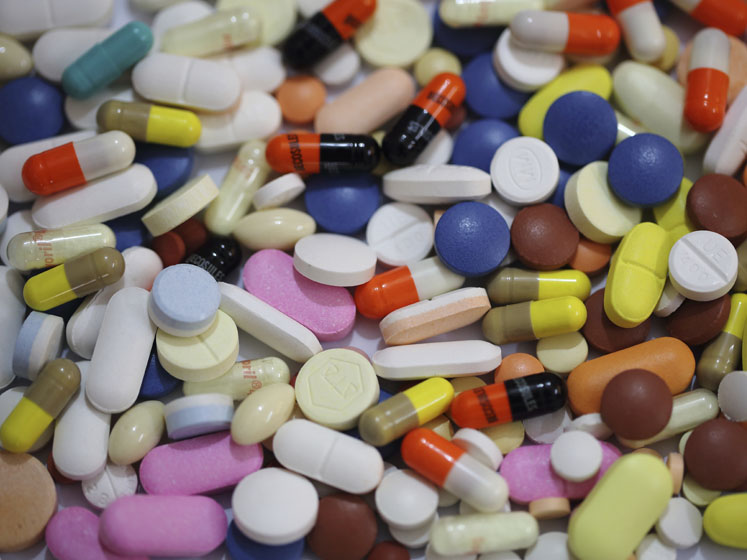KSR: In terms of the many routes of administration that are available, from oral solid dosage (OSD) forms to parenterals, topicals, inhalables and more, what delivery challenges are drug developers looking to overcome?
ML: Patient centricity is one of the most relevant trends in the development of current drugs. To target specific patient populations, for example, user-friendliness is not just a desirable characteristic, it’s an essential one — particularly with the growing elderly population and those affected by neurodegenerative diseases.
One of the most important challenges for drug developers is the low solubility and bioavailability of many active pharmaceutical ingredients (APIs).

Manuel Leal
Approximately 40% of new chemical entities (NCEs) entering the drug pipeline have low solubility and the industry continues to struggle to find new drugs that improve existing therapies.
There is an increasing need for more innovative processes to advance the galenic formulation of oral solid drug products — a challenge that can often be addressed by innovative processes such as spray drying.
There are also a number of well-known molecules that may benefit from the application of cutting-edge technologies to improve their effectiveness and patient compliance.
These value-added medicines are a step between generics and NCEs, with clear regulatory pathways both in the US and in Europe, which offer a wide range of opportunities for patient-centric applications.
SR: Pharmaceutical companies are searching for solutions to make their drug products more patient-centric. The trend is manifesting itself in different ways, but the essential aim is to make drugs perform optimally for more individual patients.
This is sending pharma development in new, exciting directions. One area of ongoing development and a key focus for Lonza’s Capsules and Health Ingredients (CHI) business division is improving the therapeutic performance and, therefore, the patient centricity of OSD formulations.
However, creating dosage forms that are easy to swallow is just the start of what we and pharma are doing to make OSDs more patient centric.
Emerging development and therapeutic goals are introducing manufacturing complexity in new ways. For example, many new APIs are highly potent, insoluble and formulated with difficult chemistries that make controlling and modifying release a critical aspect of therapeutic performance, dose frequency and dose compliance. Sustainability is making inroads into pharma innovation as well.
Manufacturers are now specifying clean label ingredients for their products … especially in the nutraceutical area. Here, provenance is vital with the intent to provide vegetarian dose forms whenever possible.
Lonza CHI recognised this trend early, introducing a clean label hydroxypropyl methyl cellulose (HPMC) capsule, not only to serve cultural/market goals, but also to answer API compatibility issues control goals as well.

Steve Rode
The FDA’s 505b2 pathway is another solid driver of drug innovation and, to a certain extent, drug complexity, depending on the formulation and dose form. Now, capsule materials, size and other elements can be matched and tailored to suit most formulations, including
- highly potent APIs
- fixed-dose combinations of incompatible APIs
- acid-sensitive APIs
- controlled release
- liquid and viscous formulations
- engineered drug particles
- inhalable powders for dry inhalers
- sprinkle dispersions
- rectal/vaginal treatments.
Because it simplifies the approval of new formulations of existing drugs, capsules offer developers a less risky economic path to improve the therapeutic performance and dose control of proven formulations.
It also supports the efficient development of new fixed-dose combinations (FDCs) that, according to our research, are likely to be administered in encapsulated forms.
JR: In the OSD formulation space, drug developers still require help with classic challenges such as food effects on the absorption of certain drugs; the presence of food in the digestive tract can reduce the absorption of a drug and, therefore, its efficacy.
The increasing number of highly potent and complex small molecule formulations entering the development pipeline is creating new challenges when it comes to bioavailability and solubility.
Many APIs remain crystalline in nature and exhibit poor solubility; however, they can be converted into amorphous solids dispersions (ASDs), shaped to offer more surface area and support better dissolution profiles and enhanced bioavailability.
Once amorphous particle forms reach the GI tract, the API is released in greater concentration. This allows the formulation of drug products with much higher dosage levels compared with lipid-based systems. Ultimately, these formulations allow for more API in a single dose … and that means more medication in fewer doses for patients.
The process of generating ASDs is well understood. However, amorphous compounds are thermodynamically less stable, so it’s often necessary to employ polymeric matrices to improve their stability, which can require niche CDMO expertise.

John Ross
The solubilisation of drugs within formulations — particularly those within the BCS (biopharmaceutics classification system) II and IV classes — is another area in which manufacturers require help, along with understanding how dose, half-life, solubility and release profile contribute to the design of controlled-release dosage forms.
KSR: As drug delivery is all about the physical act of dosing a targeted API, what developments, processing trends and manufacturing techniques can or should be employed to improve therapeutic outcomes and/or patient performance?
ML: OSDs are the most common dosage forms because of their convenience, cost-effectiveness and the availability of industrials solutions, but new trends and technologies are becoming available to solve some of the complex challenges in drug development.
As mentioned above, there are many BCS Class II and IV drugs that require innovative technologies and development strategies to enhance their bioavailability.
Processes such as spray drying continue to be instrumental within the industry for the development and repurposing of many drugs with solubility problems to deliver better therapeutic or patient performance.
For instance, some drugs with parenteral administration could be administered orally. This improves comfort for the patients, allowing them to take the drugs at home. Plus, the costs associated with the administration of a product at a hospital and manufacturing sterile products are avoided.
Spray drying technology and its associated benefits are also particularly compelling for orally administered drugs because more problems associated with this route can be solved.
One way is that it can help to enhance oral absorption in the fasted state, thereby reducing the food effect, which simplifies drug intake for the patient.
Spray drying can also support patient centricity through tastemasking … as bad flavours are common in a lot of active substances. Overcoming this using spray drying technologies can also directly impact the comfort of the patient taking the product, therefore improving therapeutic compliance too.
JR: Newer advances such as formulating capsule shells with stable enteric polymer(s) are proving to be beneficial as they mitigate the need for enteric coating.
Some manufacturers, therefore, now include this as a process step. Also, the growing popularity of minitablets — multiple unit dosage forms that have diameters of ≤3 mm — is notable.
The capability of these OSDs to be dosed either in a capsule or in a sachet provides multiple delivery systems within the same form.

SR: Therapeutic innovation is coming from all corners of OSD development and it seems that each individual capsule or tablet has to do more than ever before.
For example, it has to deliver more potent/insoluble API compounds with precision control and targeting, be smaller and easy to swallow, manage bioavailability and be capable of a multitude of other integrated functions.
Functional excipients have been made available to improve the stability and solubility of Class II biopharmaceutical compounds and to allow for more targeted delivery; this has removed some potential barriers to oral bioavailability in these formulations.
With capsules, the greatest challenges relate to the characteristics of the API. The size of a molecule may make it impossible to deliver a substance orally, which is often the case with proteins.
The solubility required will also need specific formulation approaches and we have to consider dose, stability, odour and colour during development.
According to World Health Organization (WHO) projections, chronic obstructive pulmonary disease (COPD) will become the third leading cause of death worldwide by 2030.1,2
The current prevalence of respiratory diseases is driving a renewed interest in the development of patient-centric delivery modes, including capsule-based dry powder inhalers (cDPIs).3,4,5
In response, pharmaceutical developers are focusing on developing effective inhalable OSD compounds that are more effective at treating asthma and COPD than current therapeutics.6
One of the key drivers in the development of inhalation products is keeping the treatments affordable. WHO data shows that more than 90% of COPD deaths are in low and middle-income countries.7
Among the various DPI technologies and platforms available, the complexities of reservoir-based or blister-based systems can make manufacturing these technologies expensive and complicated.
On the contrary, cDPIs are recognised for their simplicity, cost efficiency, patient friendliness and overall effectiveness in delivering dry inhalable therapeutics.
Patient dose compliance is a critical aspect of drug design that impacts overall treatment efficacy. It also has a major impact on trial and patient outcomes and the eventual commercial success of most contemporary prescription drugs.
Ultimately, there is a strong incentive for companies to develop well-adapted dose forms that support patient compliance — especially for children and ageing patients.
References
- www.who.int/gard/publications/The_Global_Impact_of_Respiratory_Disease.pdf.
- www.who.int/news-room/fact-sheets/detail/the-top-10-causes-of-death.
- http://rc.rcjournal.com/content/respcare/50/10/1304.full.pdf.
- www.ncbi.nlm.nih.gov/pmc/articles/PMC4444630.
- www.ondrugdelivery.com/dry-powder-inhalers-towards-effective-affordable-sustainable-respiratory-healthcare.
- www.ondrugdelivery.com/simple-affordable-dpi-meeting-needs-emerging-markets.
- www.who.int/respiratory/copd/burden/en.





